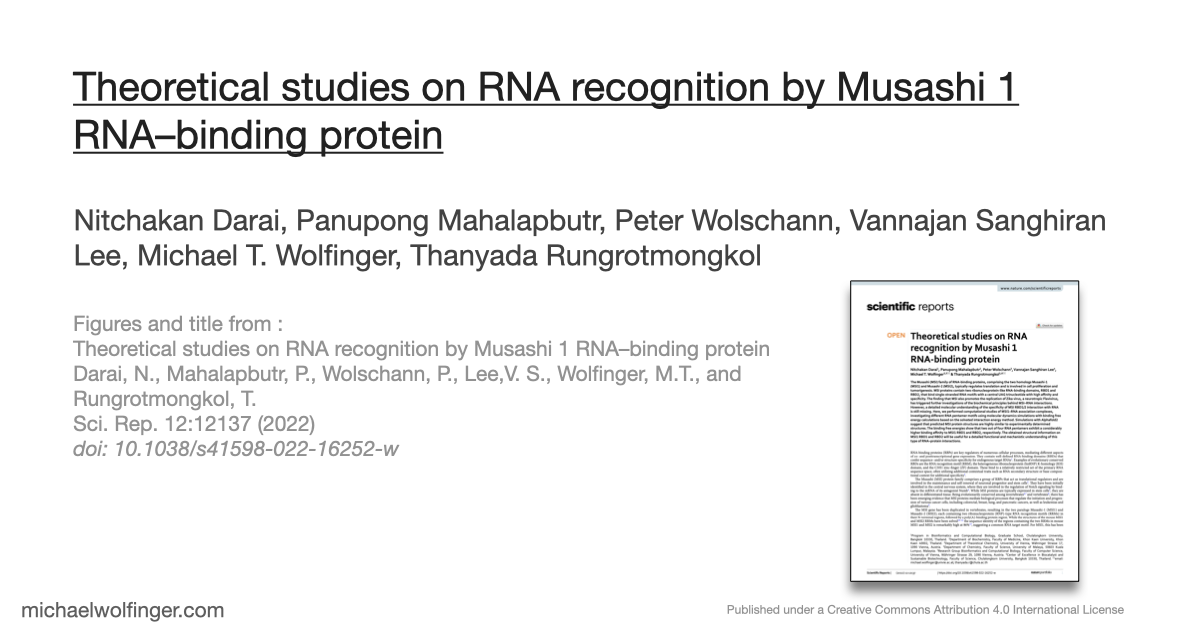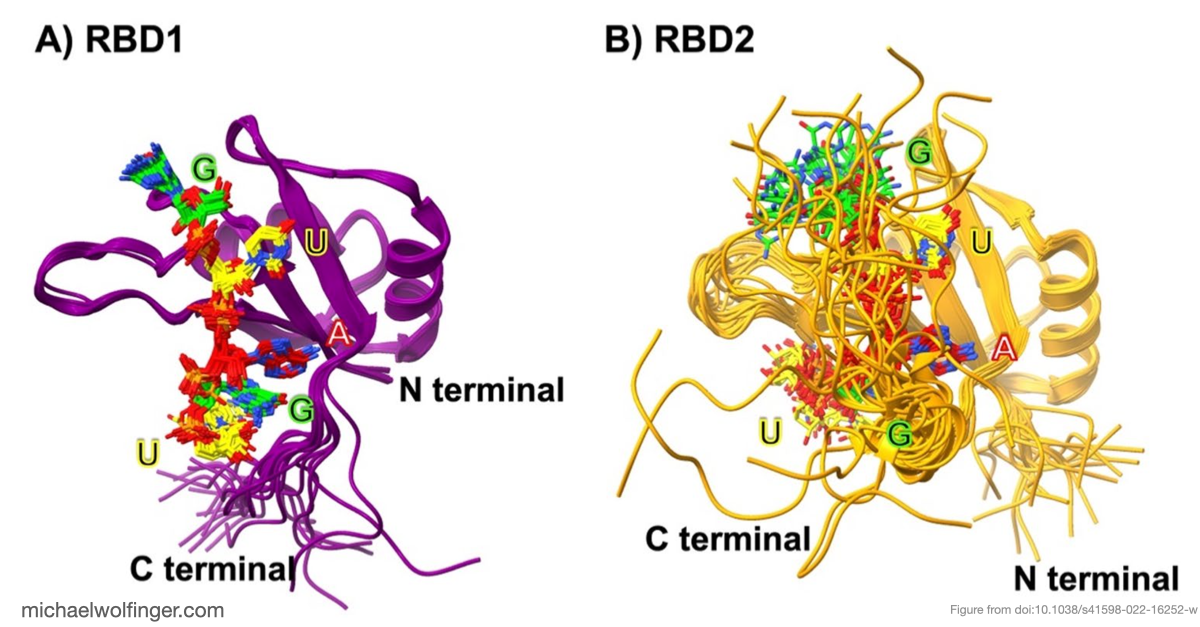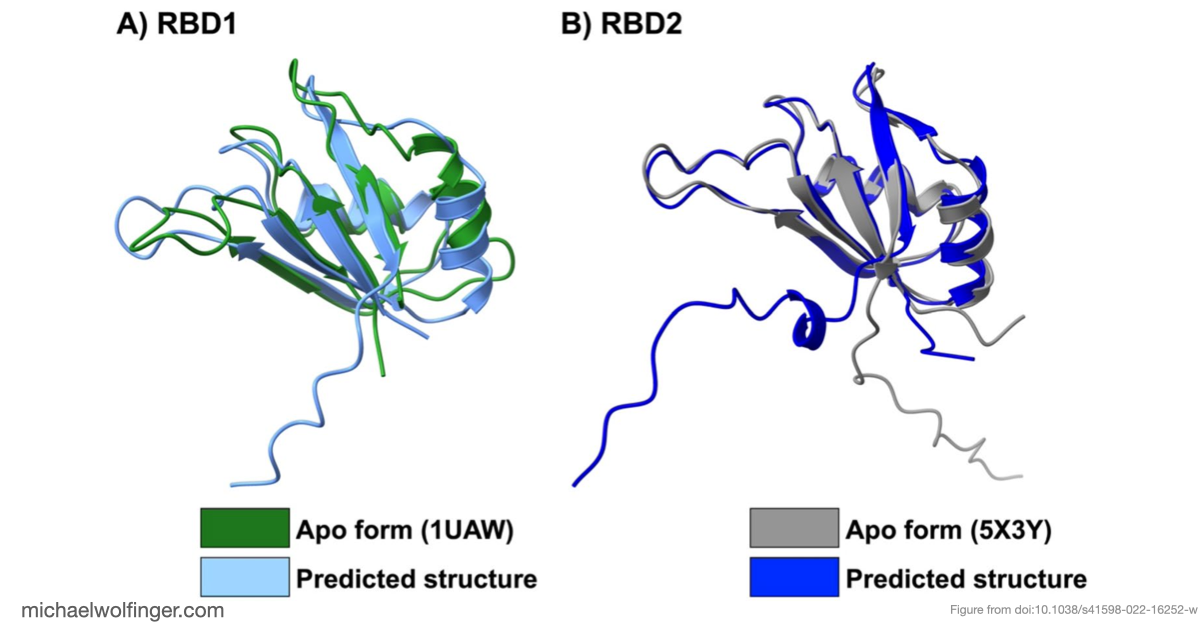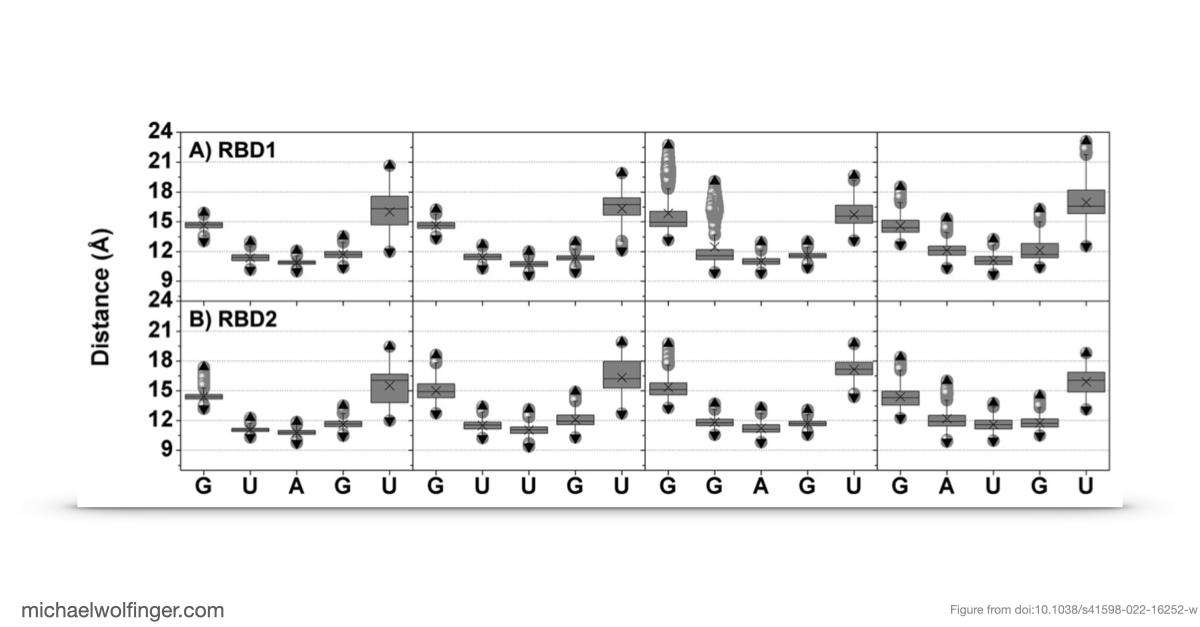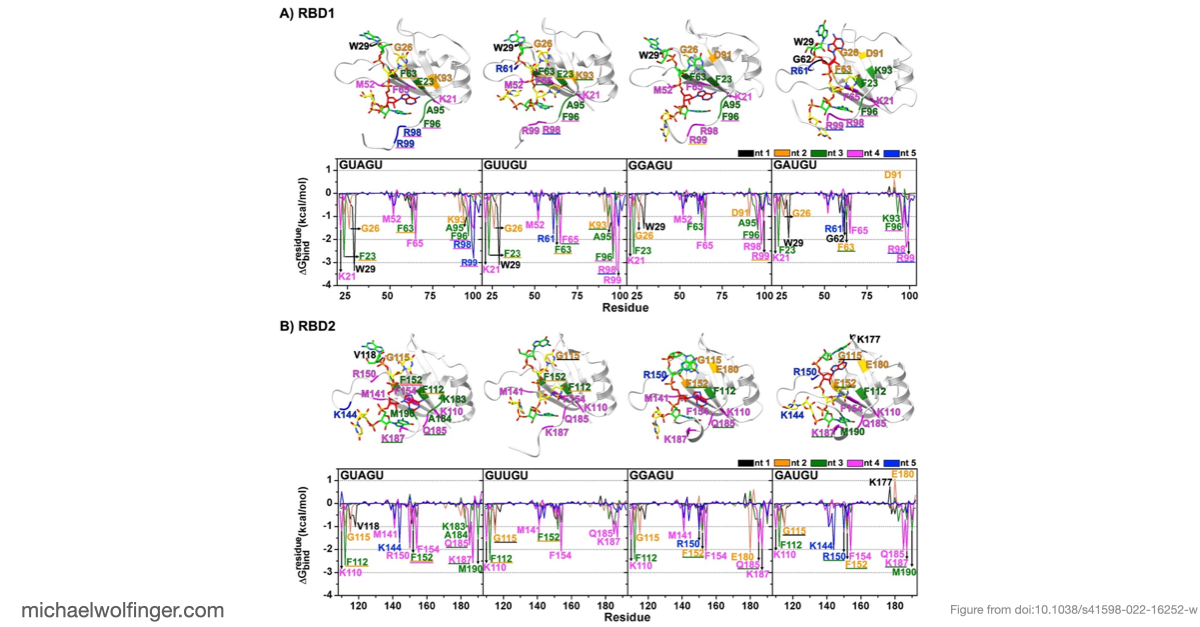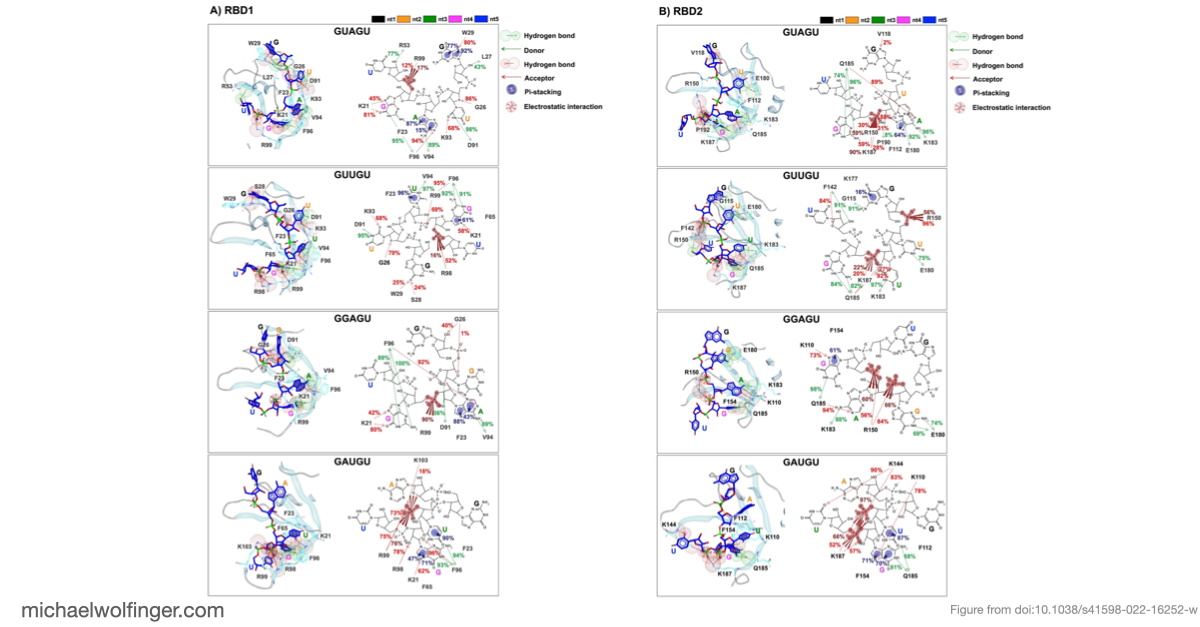Musashi-1 RNA-binding protein's role in RNA recognition
In this contribution we study the association complexes of the RNA-binding protein Musashi-1 with different RNA motifs, using molecular dynamics simulations
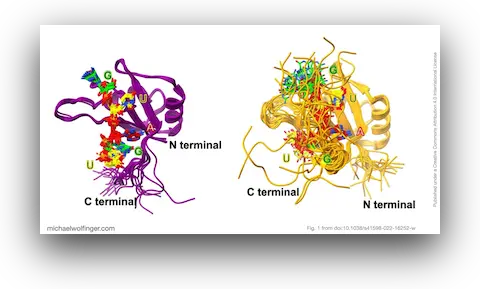
Musashi-1 (MSI1), an RNA-binding protein, plays a pivotal role in maintaining and self-renewal of neural progenitor and stem cells. Intriguingly, it has been demonstrated to enhance Zika virus (ZIKV) replication, emphasizing the significance of MSI1:RNA complexes in ZIKV-induced neurotropism.
In this study, we employ computational modeling to assess the association complexes formed between the RNA-binding protein MSI1 and various target RNAs. MSI1 has two RNA-binding domains, each displaying distinct affinities for binding single-stranded RNA molecules. Utilizing molecular dynamics simulations alongside binding free energy calculations, we delve into the intricacies of MSI1:RNA complexes. This investigation holds the key to unraveling MSI1's role in congenital neuropathology, notably microcephaly.
Collaborating with esteemed researchers Thanyada Rungrotmongkol and Nitchakan Darai from Chulalongkorn University, as well as Peter Wolschann from Universität Wien, this study advances our understanding of RNA-protein interactions with profound implications for both biology and disease.
Figures and Data
Citation
Theoretical studies on RNA recognition by Musashi 1 RNA–binding protein
Nitchakan Darai, Panupong Mahalapbutr, Peter Wolschann, Vannajan Sanghiran Lee, Michael T. Wolfinger, Thanyada Rungrotmongkol
Sci. Rep. 12:12137 (2022) | doi:10.1038/s41598-022-16252-w | PDF
See Also
Musashi Binding Elements in Zika and Related Flavivirus 3’UTRs: A Comparative Study in Silico
Adriano de Bernardi Schneider, Michael T. Wolfinger
Sci. Rep. 9(1):6911 (2019) | doi:10.1038/s41598-019-43390-5 | PDF | Figures
A Structural Refinement Technique for Protein-RNA Complexes Using a Combination of AI-based Modeling and Flexible Docking: A Study of Musashi-1 Protein
Nitchakan Darai, Kowit Hengphasatporn, Peter Wolschann, Michael T. Wolfinger, Yasuteru Shigeta, Thanyada Rungrotmongkol, Ryuhei Harada
B. Chem. Soc. Jpn. 96(7):677–685 (2023) | doi:10.1246/bcsj.20230092 | PDF
